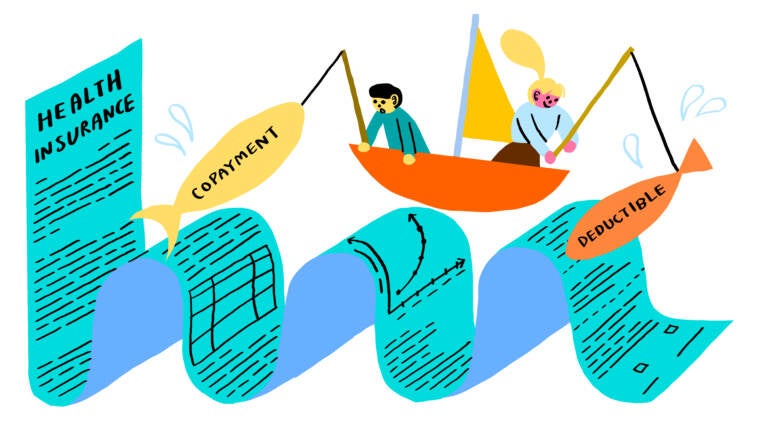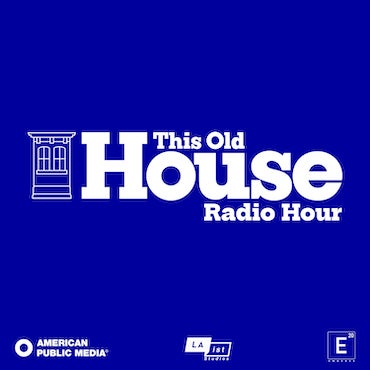6 tips to help you pick the right health insurance plan

Subin Yang for NPR
If you’re buying health insurance outside a job-based plan, you’re in luck this fall. After years of cutbacks and — some say sabotage — of the Affordable Care Act during the Trump administration, the Biden administration is pulling out the stops to help people find good health plans on HealthCare.gov right now — the open enrollment period starts this week. You will have more time to sign up, more free help choosing a plan, and a greater likelihood you’ll be eligible for subsidies to help keep down the costs of a health plan you buy via the ACA marketplace.
Still, picking health insurance can be hard work, even if you’re choosing a plan through your employer. There are a lot of confusing terms, and the process forces you to think hard about your health and your finances. Plus you have to navigate all of it on a deadline, often with only a few-week period to explore your options and make decisions.
Whether you’re aging out of your parent’s plan and picking one for the first time, or you’re in a plan that no longer works for you and you’re ready to switch things up, or you’re uninsured and want to see if you have any workable options, there’s good news. Asking yourself a few simple questions can help you zero in on the right plan from all those on the market.
Here are some tips on where to look and how to get trustworthy advice and help if you need it.
Tip #1: Know where to go
It’s not always obvious where to look for health insurance. “In this country it is a truly wacky patchwork quilt of options,” says Sabrina Corlette, who co-directs the Center on Health Insurance Reform at Georgetown University.
If you’re 65 or older, you’re eligible for Medicare. It’s a federally run program — the government pays for much of your health care. You might also be eligible if you have certain disabilities. For those already enrolled in Medicare or in a Medicare Advantage plan, the open enrollment period to switch up your supplemental health and prescription drug plans for 2022 runs through Dec. 7 this year.
For those under age 65, Corlette says, “the vast majority of us get our coverage through our employer. The employer typically will cover between 70% and 90% of your premium costs, which is pretty nice.” Check with your supervisor or your company’s human resources department to find out what, if any, plans are available to you through your job.
Then there’s Medicaid, the health insurance program for people with low incomes, that covers around 80 million people — nearly one in four Americans. It’s funded by both the federal and state governments, but run by each state, so whether you’re eligible depends on where you live.
For practically everyone else, the place to go is Healthcare.gov, where you can shop for insurance in the marketplaces created by the Affordable Care Act, also known as Obamacare.
This is where you look for health insurance if you don’t fit any of the categories we mentioned previously, Corlette says — if, for example, “your employer doesn’t offer you any coverage; you’re not eligible for Medicare because you’re not old enough; and you’re not poor enough for Medicaid. You can go to the marketplaces, apply for financial help depending on your income, and choose a plan there.”
Tip #2: Overwhelmed by the options? To help you choose, think about what’s predictable about your health
If you’re basically healthy and picking from one or two plan options through your job, the choice may be pretty simple. You might just ask your coworkers what they like, sign up through an online benefits portal, and call it a day.
If you’re shopping in the Affordable Care Act marketplaces, however, the number of choices can feel overwhelming at first. In Austin, Texas, “we had 76 plans to review with clients,” says Aaron DeLaO, director of health initiatives with Foundation Communities.
Even with dozens of options, you can narrow things down with some basic questions, DeLaO says. First, ask yourself: “Do you [just] want insurance for that catastrophic event that might happen, or do you know you have a health issue now that you’re going to need ongoing care for?”
If you’re pretty healthy, any of a variety of plans might work. But if you or your spouse or dependent family member has particular ongoing health needs (such as an underlying medical condition, for example, or plans to undergo fertility treatments in 2022 or the need to see a particular medical specialist), that information can be really useful in helping you narrow the field to your best health insurance choice. “If there’s a plan that doesn’t have your provider or your medications in-network, those can be eliminated,” he says.
Sometimes you can enter in your medications or doctors’ names while you search for plans online to filter out plans that won’t cover them. You can also just call the insurance company and ask: Is my provider in-network for this plan I’m considering? Is my medicine on the plan’s formulary (the list of medications an insurance plan will cover)?
There are also two major different types of plans to consider. “You may have a choice between what’s called an HMO or a PPO,” says Corlette. A Health Maintenance Organization tends to have a strict network of providers — if you see a provider outside of the network, the costs are all on you. A Preferred Provider Organization “will give you a lot broader choice of providers — it might be a little bit more expensive to see than an out-of-network provider, but they’ll still cover some of that cost,” she explains.
Tip #3: Learn what a few of those wonky health insurance terms mean
How much can you afford to pay for health insurance every month? In order to compare the true overall cost of health plans and figure out which one might work best within your budget, you need to get familiar with several important insurance terms — words like premium, cost-sharing, deductible and copay.
Luckily, we made a handy health insurance glossary just for you.
Insurance companies use these different types of charges — the premium vs. the deductible, for example — sort of like dials to keep their own costs manageable. A basic plan they sell might dial down the monthly premium on a particular plan, so it looks inexpensive. But that same plan might have a high, “dialed up” deductible of, say, $6,000 — meaning you’ll have to spend $6,000 out of your own pocket on health services each year before your insurance begins to pay its portion of the cost. If you picked that plan, you’d be betting you won’t have to use a lot of health services, and so would only have to worry about your — hopefully affordable — premiums, and the costs of a few appointments.
If you have a chronic medical condition or are simply more risk averse, you might instead choose a plan that has dialed up the amount of the premium. You’ll be forking over quite a bit more than for the other plan every month, but your costs will be more predictable — you’ll likely have a lower deductible and lower coinsurance rate. That way, you can go to a lot of appointments and pick up a lot of prescriptions and still have manageable monthly costs.
Which plans are available and affordable to you will vary a lot depending on where you live, your income and who’s in your household and on your insurance policy. With the pandemic, Congress passed new temporary funding to cover more out-of-pocket costs for people — depending on your income, you may qualify for plans with premiums of $10 or less per month on HealthCare.gov or onyour state’s ACA insurance exchange.
Tip #4: Get trustworthy professional help — for free
Still feeling overwhelmed with all the ACA choices? You’re in luck. There is free, impartial professional help available to help you choose and enroll in a plan. Just put in your zip code at Healthcare.gov/localhelp and look for an “assister” — a person also referred to as a health care navigator on some state websites.”
Aaron DeLaO is one such navigator, and notes that he and his fellow guides don’t work on commission — they’re paid by the government. “We’re not contracted with insurance agencies,” he says. “We do it completely autonomously, impartially. It’s about what’s best for the consumer.”
In 2021, the Biden administration quadrupled the number of navigators ahead of open enrollment. (Funding for the program had been severely cut by the Trump administration.)
Insurance brokers can be helpful, too, says Corlette. “Brokers do get commissions, but in my experience, the good brokers want repeat customers and that means happy customers,” she says. To find a good broker, she advises, “go through either Healthcare.gov or your local state department of insurance to find somebody that’s licensed and in good standing.”
Tip #5: Beware too-good-to-be-true plans sold online
The internet can be a scary place. Corlette says she warns people: Don’t put your contact information in health insurance interest forms on random websites or click on online ads for insurance!
The plans that tend to crop up when you Google “I need health insurance” can seem appealing because they’re often very cheap — but they might also be “short term” plans that don’t cover basic things like prescription drugs or annual check ups. Many experts warn that this type of plan is not a very good deal.
“Unfortunately, there are a lot of con artists out there who take advantage of the fact that people recognize health insurance is something that they should get,” says Corlette. She tells people: “Just go straight to Healthcare.gov. No matter what state you live in, you can go through that portal.” Any plan you find there will cover the ACA’s 10 essential benefits — such as free preventive care and hospital coverage.
Tip #6: Know your deadlines
Usually you only get a few weeks in the fall to sign up. This year, the sign up period for the HealthCare.gov marketplace plans that go into effect in January 2022 starts Nov. 1, 2021 and runs until Jan.15, 2022. If you’re signing up for an employer-sponsored plan or Medicare, the deadlines will be different, but probably also in the fall. For Medicaid, you can enroll at any time of the year.
DeLaO, the health navigator, says even if you’re already enrolled in a plan that seems fine and it’s tempting to just let it automatically renew, it’s always a good idea to annually check what else is available.
“Are you eligible for additional subsidies to lower the cost of your monthly premium?” he says. “Is there a plan that — with those increased subsidies — you can now get a silver plan as opposed to a bronze plan, which lowers your deductible [and] your copayments?”
Figuring out the right plan for you doesn’t have to require a huge time commitment, he says. His team aims to get people in and out — enrolled in a plan — in an hour and a half. And those appointments don’t have to be in person — customers can get help by phone and can often do everything they need to do to get signed up virtually.
Though signing up for health insurance can be confusing at first, it’s also very important — for your wallet and your health. Hang in there — and know there are people out there eager to help you make sure you get covered.
9(MDAzMzI1ODY3MDEyMzkzOTE3NjIxNDg3MQ001))




